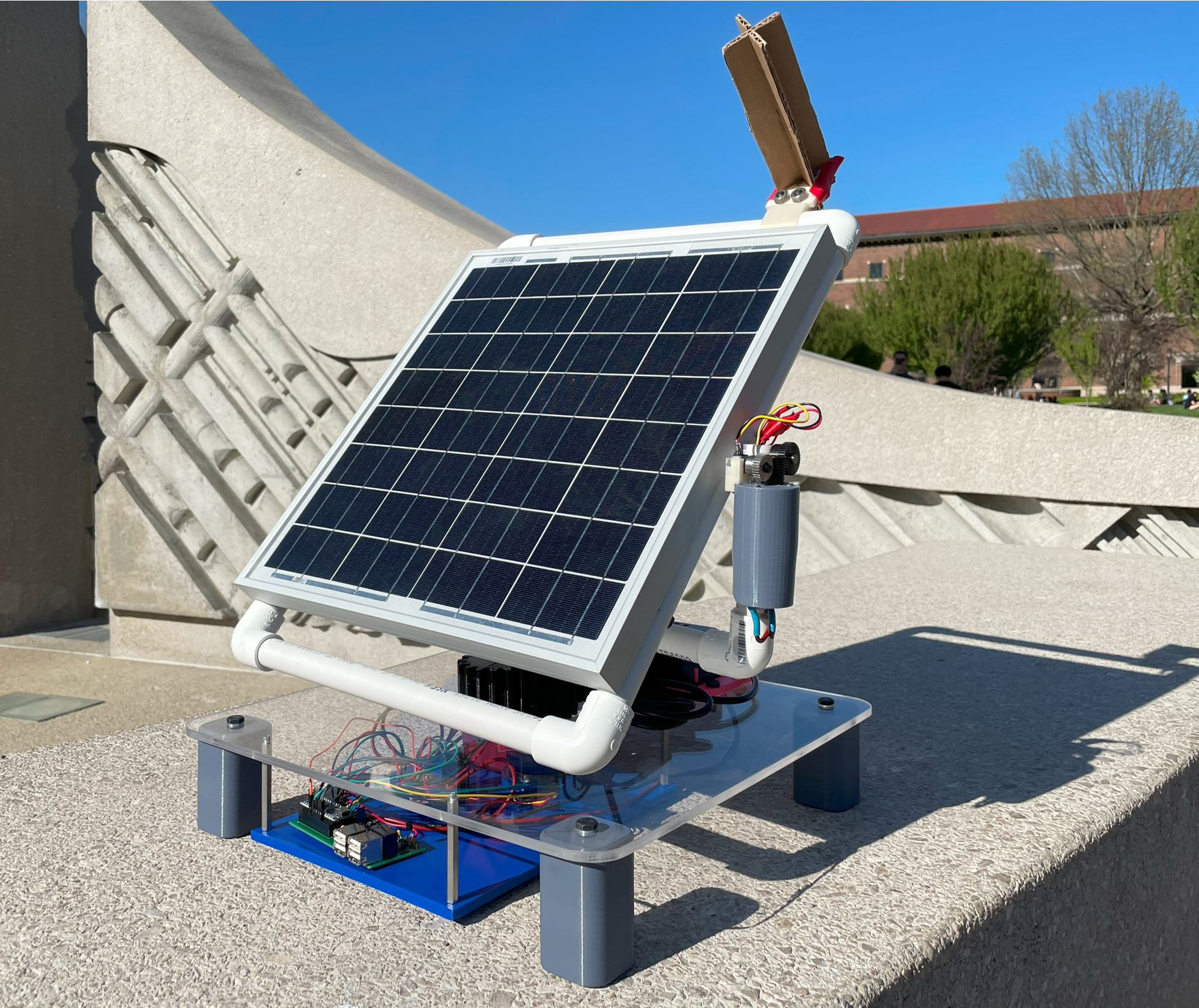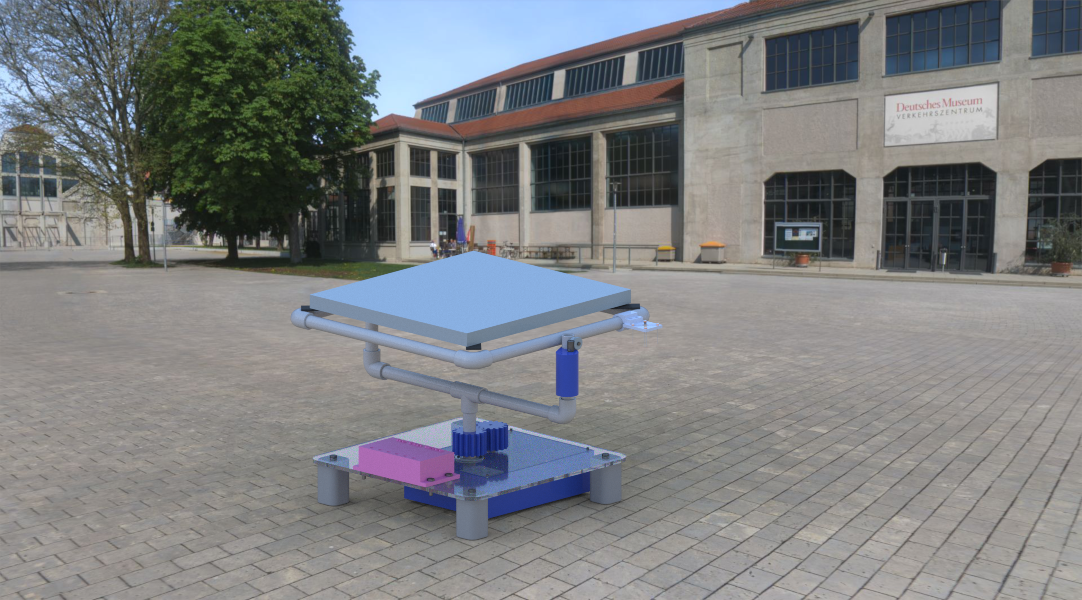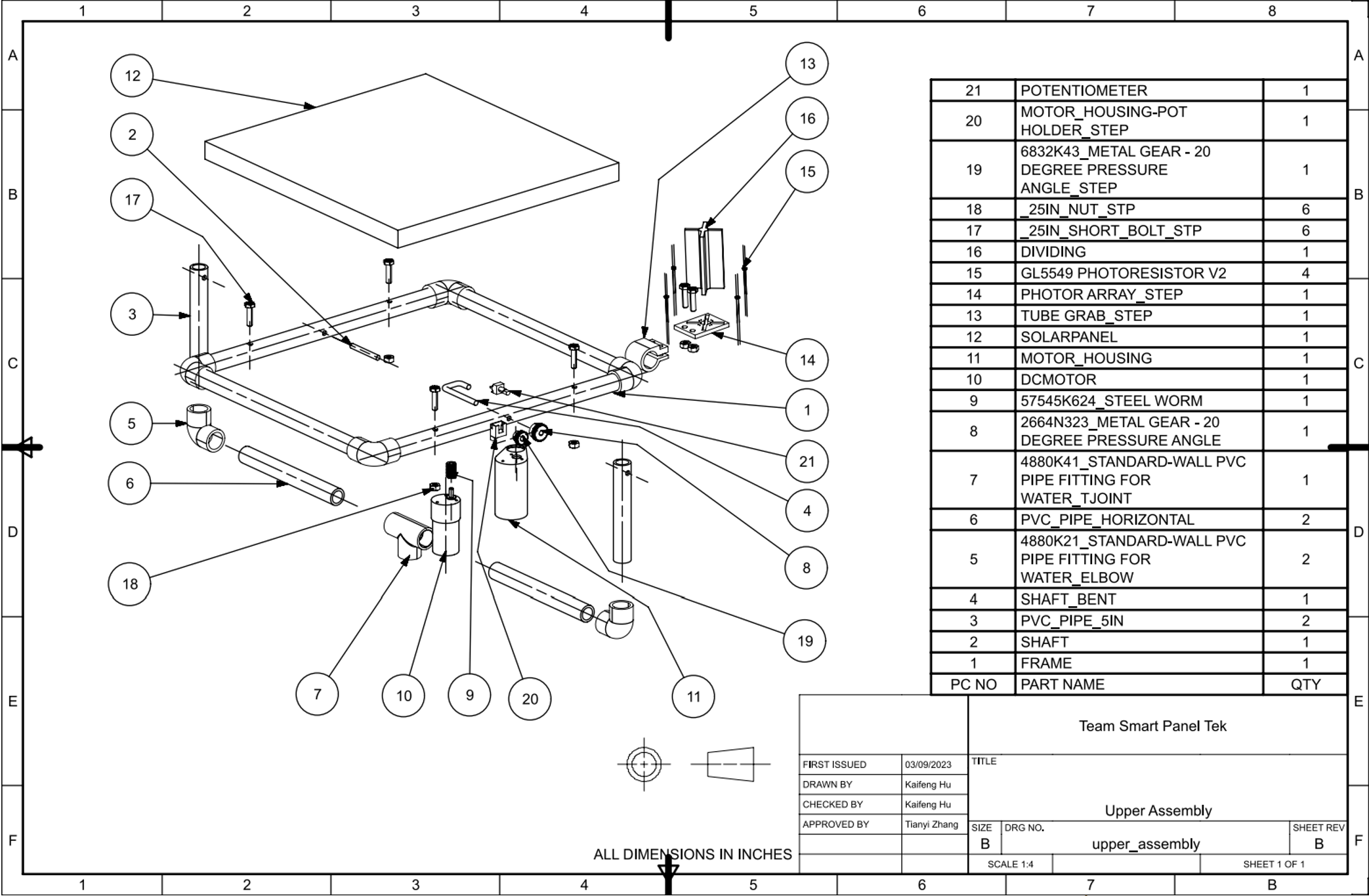Sunlight Tracing Solar Panel
Small, portable solar panels currently available in the market provide a versatile power supply for small electronics. However, existing products on the market lack the ability to track sunlight, and those that do are unaffordable. Therefore, our team aims to create a portable, low-cost solar panel that can track the sun’s position throughout the day, reset its position after sunset, and charge multiple small electronics simultaneously.
Our design can be divided into two major sections: lower and upper. The lower section serves as the base of the entire device. The base holds electronics including an Arduino controller that controls the motion of the device, a power controller that outputs power, a DC motor that controls the turning motion of the solar panel, and a lead-acid battery. The upper section, which I am responsible for designing, is a frame made of PVC pipe that holds the solar panel and a DC motor that controls the panning motion of the solar panel. The upper section also has a photoresistor array consisting of four photoresistors to detect the position of the sun. After completing our design using CAD software, we performed aerodynamic analysis and finite element analysis to validate the strength of our device. Through the analysis, we confirmed that our design can withstand a wind speed of 17.1m/s while still maintaining a minimum factor of safety of 4.73 across all components.
We performed four different validation tests to assess our prototype’s performance. To compare the prototype’s output charging power between the system tracking the sun and when it is stationary, we used the prototype to charge an iPhone and a portable power bank for 1.5 hours, with each device’s state of charge being logged every 10 minutes. After comparing the output power of the two modes, we found that on average the prototype outputs 0.3W more power when tracking the sun.
To examine the custom circuit’s operational performance, we measure the input power, output voltage, current, and power of the circuit when it is under several different loading conditions and under charge. We found that the best- and worst-case power consumption of the control circuit is approximately 0.3W and 1.0W respectively.
To verify the motion capabilities of our prototype quantitatively and qualitatively, we tested our prototype’s sun-tracking accuracy and position reset function. We found that our system can track the sun with a deviation of less than 5 degrees. We also found that the panel was able to return to the reset position from any other position smoothly.
To check whether our prototype’s weight and dimensions satisfy our weight and volume specifications, we used a measuring tape and a scale to measure our prototype. Our prototype weighs 12 lbs and has a volume of 3500 in^3
In conclusion, the prototype demonstrates the ability to track the sun accurately and can produce more power than a conventional solar panel. Our prototype is able to satisfy 10 out of the 13 engineering requirements that we have set. However, we have also identified that the internal electronics consume an excessive amount of electricity, which is a major shortcoming that requires more design iterations to be fully resolved. Therefore, we would like to request permission to further the project with more design iterations, where all technical issues can be resolved to yield a finalized product that satisfies all engineering and customer requirements.




